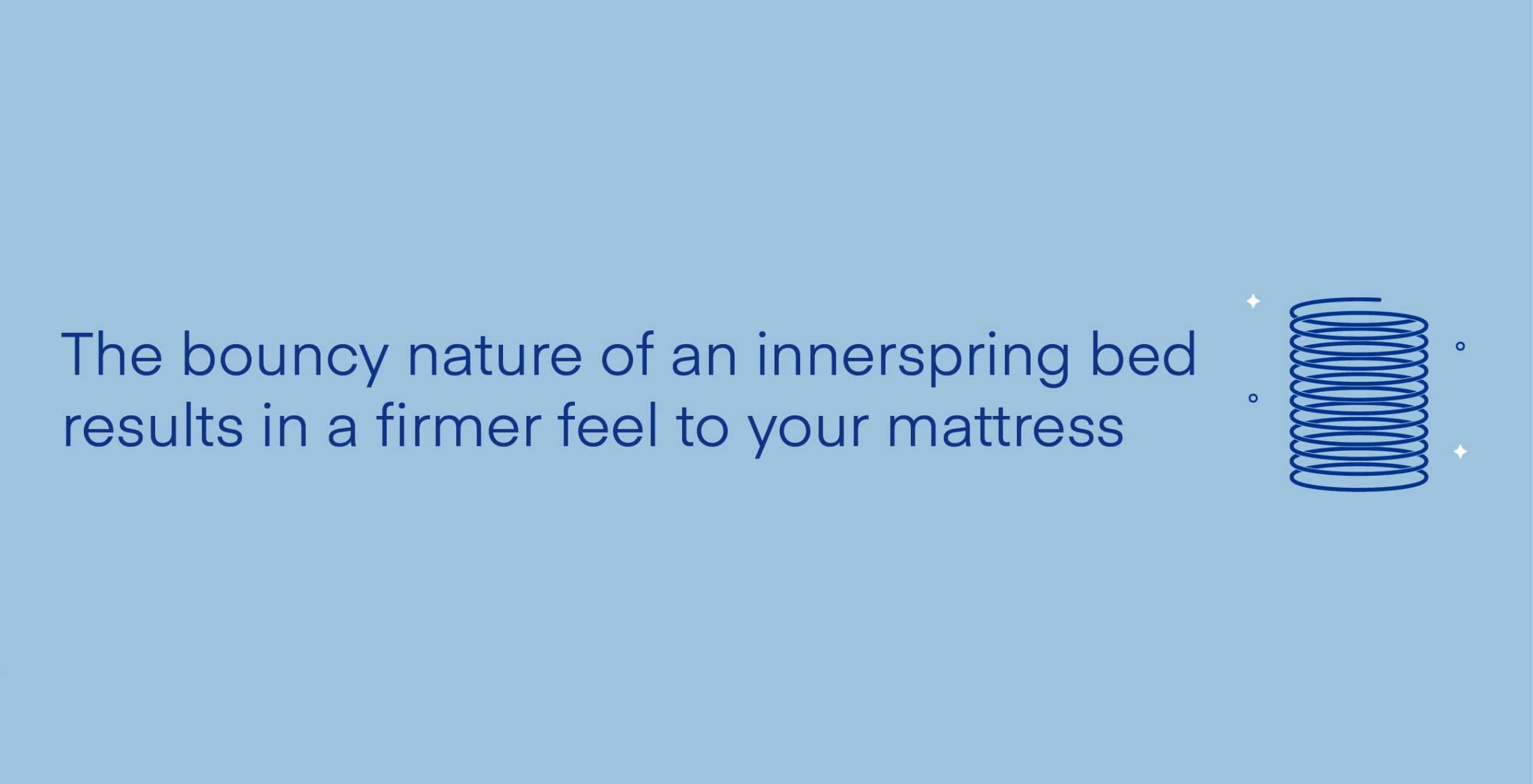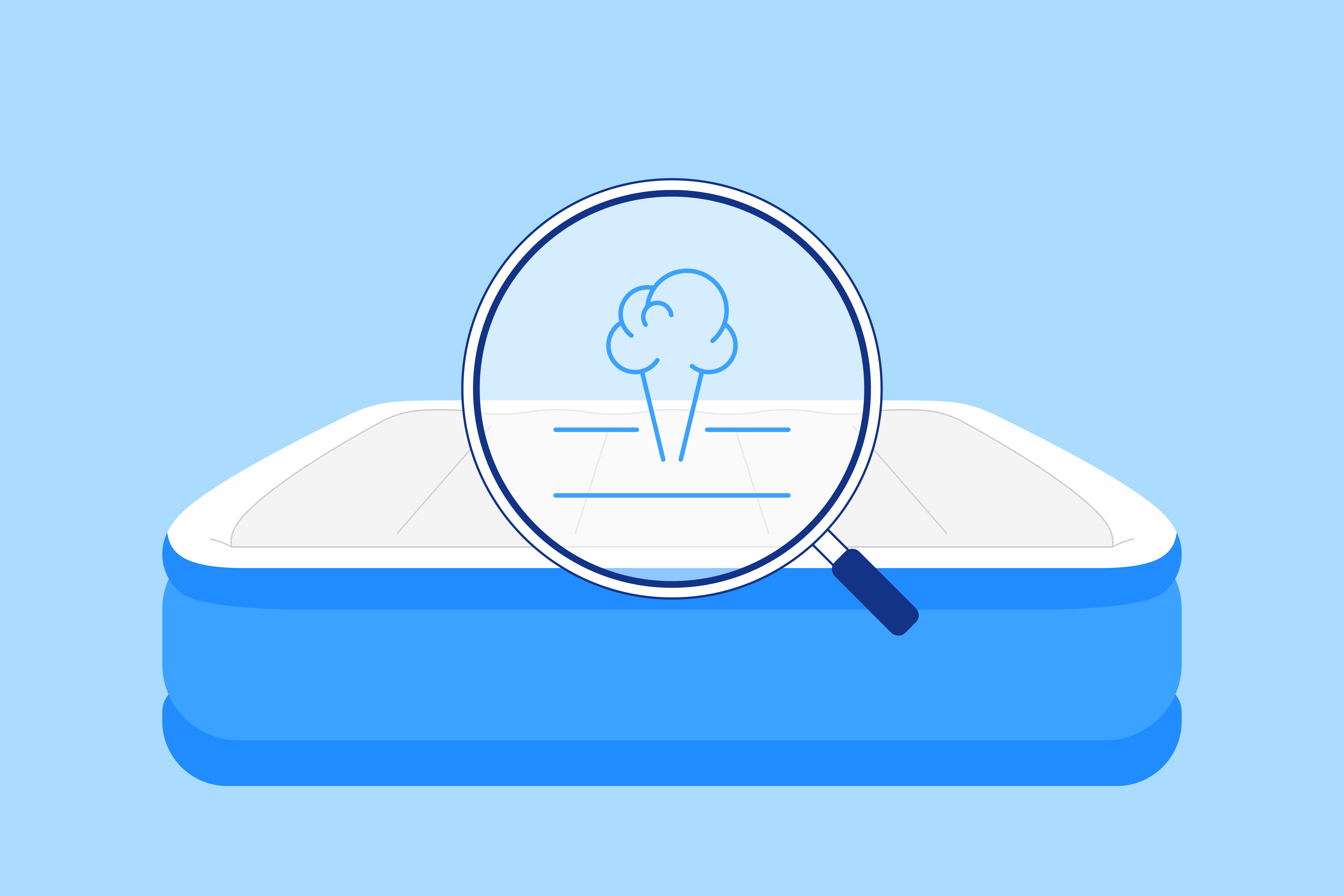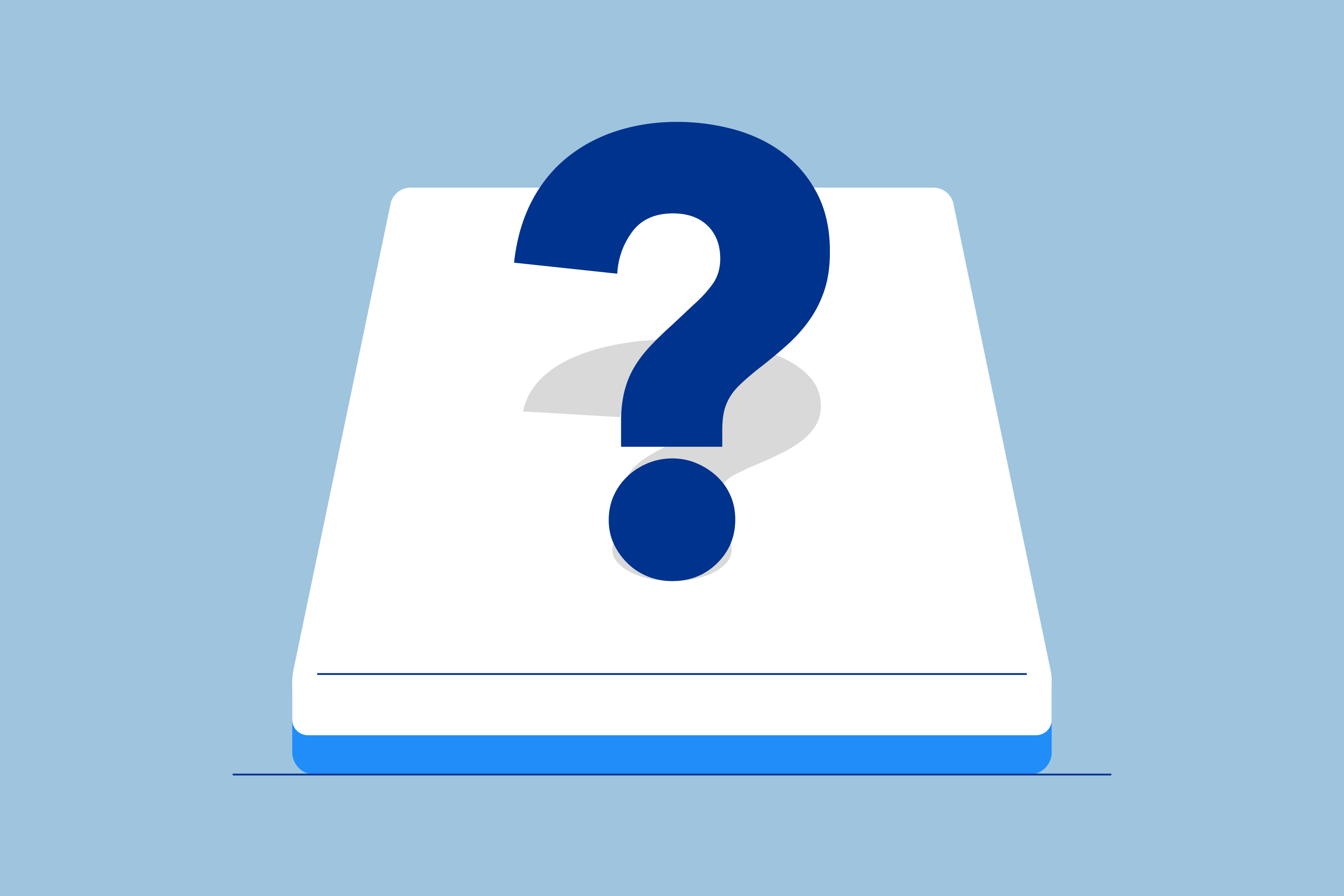We rarely see bedding brands market firm or extra-firm mattresses. Why is this? There seems to be a common misconception that a firmer mattress means less comfort.
This is interesting considering bed sheets, pillows, mattress materials, and even mattress sizes are recommended per specific needs and preferences. Firmness level is no different—typically ranging from extra-soft to extra-firm, each level is designed to meet the requirements of unique sleepers.
In this article, we will go over what an extra firm mattress is, the best one on today’s market, as well as who extra firm mattresses are fit for.
What is an Extra Firm Mattress?
Mattress firmness refers to its feel and can range from extra-soft to extra-firm. More often than not, brands rate their beds’ feel using the following firmness scale.
- 1-2: Extra-soft mattress
- 3: Soft mattress
- 4: Medium-soft mattress
- 5: Medium mattress
- 6: Medium-firm mattress
- 7-8: Firm mattress
- 9-10: Extra-firm mattress
Extra-firm mattresses are the most rigid with the least amount of give. They do not contain advanced contouring abilities and are commonly used by sleepers requiring a stable feel to a cushioned one. They come in multiple mattress types and are recommended for varying reasons which we will discuss later.
First, let’s take a look at the best extra-firm mattress on today’s market.
Best Extra-Firm Mattress
Quick Guide: A 30-Second Summary
| Best Extra Firm Mattress | Amerisleep AS1 |
-
Price Range
$749 to $1598
-
Mattress Type
Memory Foam
-
Firmness
8 to 9 out of 10 (Firm)
-
Availability
All sizes
-
Warranty
20 Years
-
Thickness
10 Inches
If you want a mattress with unwaveringly firm support, we have to recommend our AS1 memory foam mattress.
- Consistent surface feel for uncompromising support
- Partly plant-based memory foam relieves pressure
- Thick base of sturdy foam bolsters spinal alignment
- Stomach sleepers
- Certain back sleepers
- Hot sleepers
Price for a Queen: $909.30
Our AS1 is the firmest memory foam mattress we have to offer. It is composed of two foam layers, standing 10 inches tall in total. This mattress is thinner than our other beds, creating an extra firm feel most suitable for back, stomach, and heavy sleepers.
The foam layers are encased in a soft and ultra-breathable cover to promote constant airflow and cool off hot sleepers.
Just below the refreshing cover is 2 inches of Bio-Pur®, a plush partially plant-based material acting as a soft comfort layer. This soft top layer works to gently cushion the natural shape of your body without surrendering the bed’s firmness. Bio-Pur® is far more advantageous than traditional memory foam because of its open-cell structure.
An open-cell structure essentially leaves room between the foam’s particles. The supplementary space encourages air to move freely through the top layer, regulating body temperature during sleep. This level of breathability is rare in a foam mattress, making the AS1 an excellent choice for sleepers prone to night sweats.
The additional space also produces a material less dense than traditional memory foam, allowing it to regain its shape much quicker. If you frequently toss and turn, the comfort layer will quickly absorb and remove your movement so you never excessively sink or feel stuck. This feature is especially beneficial to sleepers with difficulty moving from chronic pain.
The airy and responsive top layer is succeeded by 8 inches of Bio-Core®—a firm foundation to reinforce the comfort layer while simultaneously preventing sagging and soft spots. The base foam in our AS1 is also thicker than our other mattresses, contributing to its firm feel and extraordinary longevity.
While our AS1 is firm enough to provide appropriate levels of support for back, stomach, and heavy sleepers, it may not be advantageous to side, combination, or petite sleepers. These types of sleepers need a mattress with increased cushioning to relieve pressure from their hips and shoulders.
Warranty Coverage
The extreme durability of our extra firm mattress allows us to provide consumers with an industry-leading 20-year warranty. Prior to purchasing, many customers express concerns of sagging often associated with memory foam mattresses. For that reason, our coverage includes sagging above an inch.
If your Amerisleep mattress demonstrates any damage covered by our warranty within the first 10 years, we will replace it free of cost. If a defect occurs within the second 10 years, we will replace it for half the price you paid.
Sleep Trial
All of our Amerisleep mattresses come with a risk-free 100-night sleep trial. If you don’t absolutely love your new mattress after 30 nights, give us a call and we will issue a speedy and full refund.
Benefits of an Extra Firm Mattress
Firm mattresses are often associated with improved spinal alignment, breathability, circulation, and reduced pain. Let’s discuss why.
- Firm mattresses effortlessly maintain spinal alignment, decreasing chances of morning pain. The easiest way to tell if your mattress protects the neutral position of your spine while you sleep is to lie down in your typical sleeping position then have a partner ensure your ears, shoulders, and hips are in a straight line. When the alignment of your spine is preserved, you are not forced to shift into strange postures to compensate for a lack of support while sleeping. This also allows your lungs to take in more air, resulting in better oxygen levels.
- Many sleepers report firm mattresses to sleep cooler. This is because rather than sinking into the material of your bed, you lie on top of it. Therefore, more body heat is released into the air rather than back into the mattress.
- Firm mattresses rarely sink and thus evenly distribute body weight. This ensures no single area will be forced to bear excessive pressure, leading to morning stiffness.
- Firm mattresses do not dramatically surround the body, easing movement and in turn, increasing circulation. Increased blood flow makes firm mattresses a good choice for sleepers suffering from vascular disease, blood clots, varicose veins, or diabetes.
Like most sleeping accessories, firmer mattresses were designed to meet specific needs brought about by different sleeping styles, body types, and preferences. Let’s take a look at the types of sleepers who should and should not invest in a hard mattress.
Who Benefits From an Extra Firm Mattress?
When used by the correct sleepers, firm mattresses present health benefits and promote deeper sleep.
Stomach Sleepers
When you lie on your stomach the majority of your weight is concentrated on your abdomen. A soft mattress may cause your midsection to sink, leaving your spine in an unnatural position. The best way to prevent harmful sinking is to use a firm mattress because it will push back against your body ensuring it stays lifted.
Stomach sleepers also twist their head toward one side to increase breathing, and this often results in a kinked neck. If you have frequent neck pains, use a low loft pillow or no pillow at all.
This sleeping position places stress on your back and neck, so we highly recommend training yourself to sleep on your side or back, but if you cannot, the above recommendations will help to curb the pain accompanied by stomach sleeping.
Back Sleepers
Back sleeping is the least common sleeping position. This is unfortunate considering it can naturally maintain optimal spinal alignment with the assistance of the right mattress. If you are a back sleeper, you will need a bed to push back against your torso. Firm mattresses do not give easily and are excellent at supporting the spine by keeping it lifted.
Heavy Sleepers
Heavy sleepers are defined as anyone weighing more than 230 pounds. This body weight exerts more pressure on a mattress, so anything too soft will cushion even lightweight areas like the head, back, and feet offering essentially zero support. Being fully submerged by a mattress is not only uncomfortable but unsafe for your spine. A good mattress will relieve pressure by gently contouring heavy areas like your hips and shoulders while effectively supporting your spine.
Who Should Not Use an Extra Firm Mattress?
A firm mattress may bring rest to the above sleepers, but it can result in difficulties sleeping for others.
Side Sleepers
Side sleepers tend to apply a focused amount of pressure on the bed. When you lie on your side, the hips and shoulders endure a majority of your body weight. Firm mattresses act as a sturdy foundation to evenly distribute body weight. Therefore, they are not capable of relieving your hips and shoulders from such pressure, which will inevitably cause pain.
Lightweight Sleepers
Petite sleepers are classified as anyone weighing less than 130 pounds. Firm mattresses may be too stiff to even slightly give to lightweight sleepers hips and shoulders, resulting in a complete lack of relief. If these areas are forced to carry the entirety of their own weight while lying down, they may place excess pressure on the back and cause pain.
In addition to side and lightweight sleepers, anyone with a medical condition associated with joint pain such as arthritis or scoliosis should avoid harder mattresses.
Sleepers with joint pain have sensitive pressure areas and need the cushiony relief of a soft mattress. A firm mattress will evenly distribute body weight, potentially exacerbating feelings of pressure in already sensitive areas.
These recommendations do not suggest soft mattresses are less supportive. The terms firmness and support are commonly confused with one another, and while they may occasionally cross paths they are not the same.
Firmness vs. Support
Many people use the terms “firm” and “supportive” synonymously, so what’s the difference?
Firmness refers to the way a mattress feels. Most companies use the above firmness scale to determine the feel of their mattress, but it is important to note different body types and sleeping positions result in varying preferences, making firmness a subjective concept.
Support, on the other hand, is not subjective. A supportive mattress is purposefully constructed to conserve the natural “s” shape of your spine. Brands achieve this through varying density, materials, layers, and sometimes zoned-support. The best mattress for you will at least slightly cushion and relieve the heaviest areas of your body while simultaneously optimizing spinal alignment.
So if firmness is subjective how do you know which type of extra firm mattress to choose? We will discuss the most popular types of mattresses and their particular advantages.
Types of Extra Firm Mattresses
Each type of mattress has been created with a unique sleeper in mind, so despite a common firmness level, different materials have varying purposes.
Memory Foam Mattress
Memory foam mattresses are commonly crafted from polyurethane foam, but today’s market also offers a wide range of more sleep-promoting, innovative, and modern memory foam variations such as Bio-Pur®.
Memory foam is sensitive to heat and pressure, meaning it adequately distributes body weight. Although an extra-firm memory foam mattress will appropriately support every part of your body, it will also provide gentle contouring to inhibit pressure build-up below the hips and shoulders.
Memory foam’s sensitivity to heat and pressure causes it to compress only where movement occurs, allowing it to productively isolate motion. If you tend to frequently move while asleep, the bed won’t jostle your peacefully-sleeping partner, making the material an excellent choice for couples or sleepers easily woken.
Memory foam mattresses are also well-known for their exceptional durability, lasting anywhere from 7 to 9 years.
Hybrid Mattress
Hybrid mattresses combine the pressure relief of memory foam with responsive coils. In a hybrid bed, coils rest beneath at least 2 inches of a foam comfort layer.
Extra-firm hybrids will feel less firm than a traditional innerspring bed but more firm than a memory foam mattress. Ideally, the coils beneath the foam comfort layer will be pocketed. Pocket coils are detached and individually wrapped in fabric, suppressing motion transfer and permitting constant airflow. This makes them a good choice for anyone that finds traditional memory foam too hot.
Latex Foam Mattress
Latex mattresses are constructed from natural or synthetic latex, and sometimes a blend of the two. However, natural latex foam is more durable, breathable, and eco-friendly than synthetic or blended latex.
It is harvested and refined from the sap of a rubber tree, ensuring a sustainable manufacturing process and more often than not, an eco-friendly material. Since natural latex is a form of rubber it is bouncy and may transfer movement easier than memory foam. This also results in a firmer feel best for heavier sleepers.
Natural latex is also extraordinarily dense and durable which makes it rather heavy and difficult to move alone. However, such strength can last anywhere from 12 to 15 years. This level of longevity does result in a higher price point.
Innerspring Mattress
Innerspring mattresses consist of steel coils beneath a comfort layer typically made from natural fibers like cotton or wool. Nowadays, most innerspring mattresses also have a plush pillow top crafted from memory foam, latex, wool, gel, or other materials. The pillow top is attached to the surface of the comfort layer to increase softness.
Comfort layers and pillow tops do not typically affect firmness. Rather, the number, thickness, and shape of coils determine firmness level. The most common indicator of a firmer mattress is thick coils.
More often than not, the coils in an innerspring mattress are connected, so when you or your sleep partner turn in bed, the coils move in tandem, transferring the motion across the bed. However, this level of responsiveness excels at pushing back against the pressure of our body and is a suitable option for stomach or plus size sleepers.

The bouncy nature of an innerspring bed results in a firmer feel than the above mattresses. As the oldest bed on the market, innerspring mattresses are widely available and therefore, affordable. However, they are not nearly as durable as a memory or latex foam mattress.
FAQs
Are extra firm mattresses good for back pain?
At one point in time, sleep specialists recommended firm beds for back pain, but they have recently shifted their suggestion to a medium-firm feel. Trial and error has revealed a methodical combination of both pressure relief and support is necessary to alleviate back pain.
Medium-firm mattresses are soft enough to cushion and relive heavier body parts, but firm enough to keep the torso elevated. This combination protects the natural arch of our spine ensuring we do not settle into uncomfortable positions while asleep.
On the contrary, an extra firm mattress may be too stiff to surround and relieve high-pressure areas like the hips and shoulders. This results in abnormally-high-resting hips and shoulders affecting the curve of our spine.
Is a foam or spring firm mattress better?
The best mattress is dependent on preference. A firm foam mattress will provide a nice combination of support and pressure relief, making it a good choice for anyone with multiple areas of pain like the shoulders, back, and hips.
Spring mattresses push back with a similar amount of pressure applied to them. This results in a solid foundation with less give. Firm spring mattresses may prove useful to sleepers not experiencing frequent pain, stomach sleepers looking to protect their spine, or heavy sleepers that easily descend into their bed.
How do you know if your mattress is too firm?
As mentioned above, firm mattresses are not for everyone. If you consistently feel like your shoulders, hips, and knees are resting above the rest of your body, you are probably too light for a firm mattress.
Another tell-tale sign of a mattress too firm is waking to tingling body parts. The way we lie affects where we apply pressure on a mattress. If our mattress is not soft enough to cushion these high-pressure areas, it causes specific body parts to carry the weight and go numb. This suggests your typical sleeping position is not compatible with a firm bed.
Does a firm bed get softer?
Mattresses can take anywhere from 30 to 90 days to “break-in,” but the bed will eventually give to your specific body shape and increase in comfort. If you have recently made the switch from a soft feel to a firm mattress, you should also allow yourself some time to adjust to its feel. A soft mattress topper may ease both of these adjustment periods.
Are firm mattresses comfortable?
Like firmness, comfort is subjective. Finding a comfortable mattress comes down to the type of sleeper you are, your body type, and perhaps health-related circumstances affecting the quality of your sleep. Firm mattresses are most likely to feel comfortable to heavy sleepers, back sleepers, and stomach sleepers.
Conclusion
The verbiage “plush, cushiony, and fluffy” are used to describe comfortable beds. Perhaps because they are more attractive than “sturdy, strong, and rigid.” The one thing these terms have in common is that they are just words, which is not enough to fulfill your needs as a sleeper.
If you find it difficult to relate to the claims of comfort associated with softer mattresses, you may be the perfect candidate for an extra-firm mattress. We encourage you to analyze your current mattress in relation to your sleeping position, body type, and quality of sleep. If your quality of sleep is less than satisfactory, consider adjusting the feel of your mattress using the above advice.
About the author
Sanchita Sen is a full-time writer focusing on the sleep health and mattress industry. She is a former journalist who has written numerous articles on the healthcare sector. Some of the topics she has covered include how to lucid dream, fever dreams, melatonin for sleep, and best gel memory foam mattress. Sanchita holds a Master of Arts in Communications from Convergence Institute of Mass Media and Information Technology Studies. She is also a published author, who seeks inspiration from both real life and the world of fiction.
View all posts






